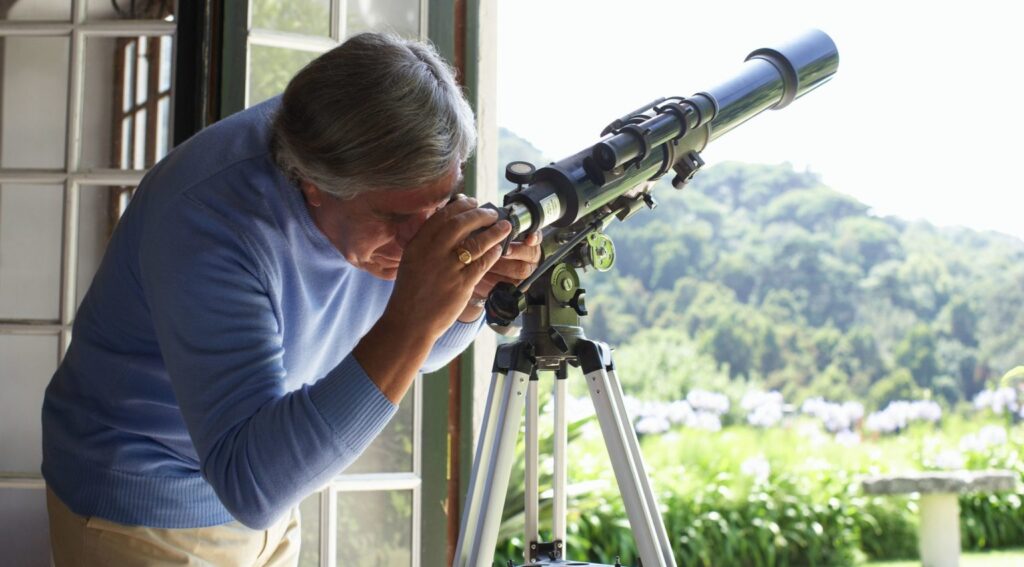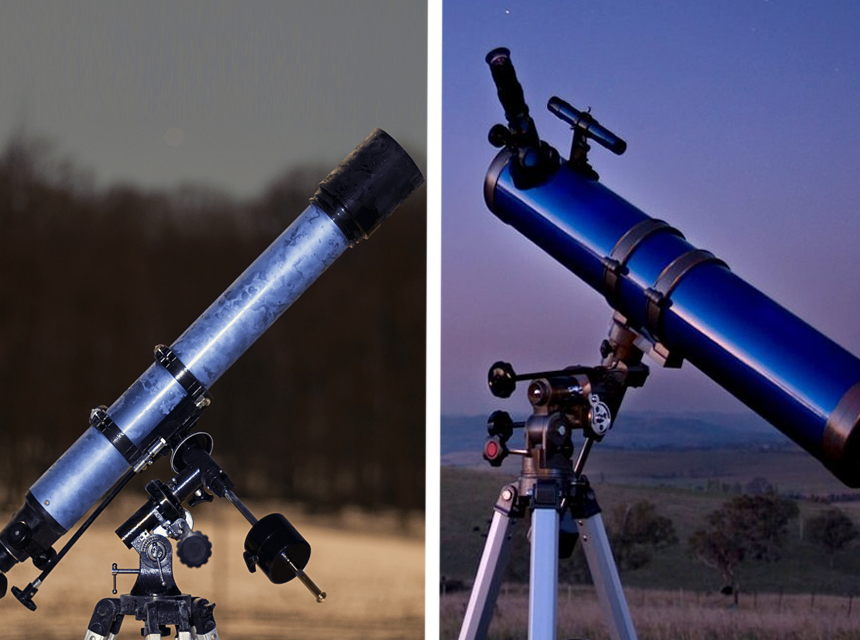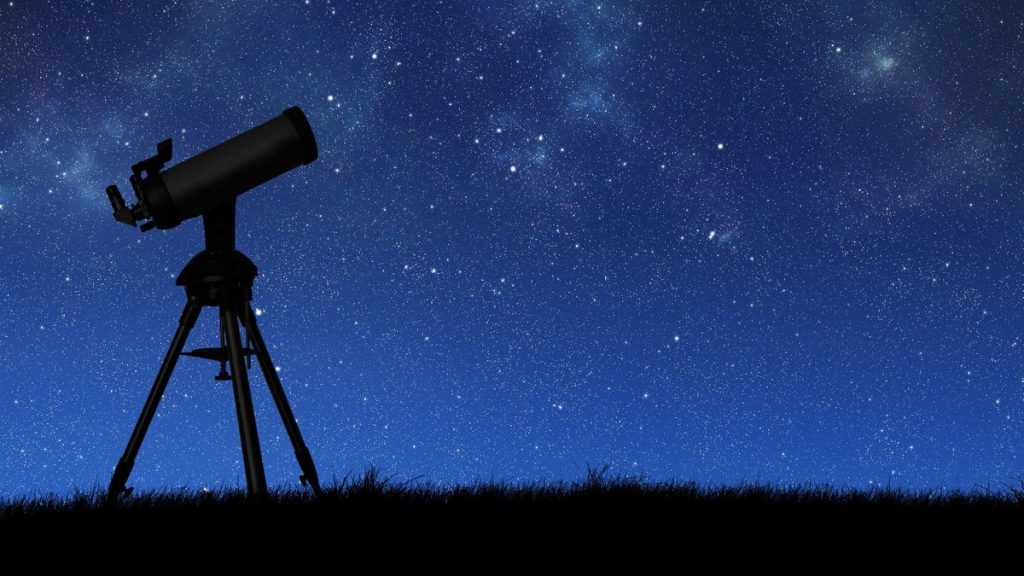If you have ever loved the stars and stared up at the night sky, then you have probably had a telescope at some point in your life. Telescopes are great pieces of technology as they allow us to see up closer at our nearby stars. We can learn a lot from telescopes, but to keep that quality of education, you need to know how to properly take care of your telescope. If you want to keep your telescope in prime condition for as long as possible, you must learn how to clean a telescope and especially how to clean a telescope mirror. If you don’t know how to do these tasks, then don’t worry because we will go over all the steps here.
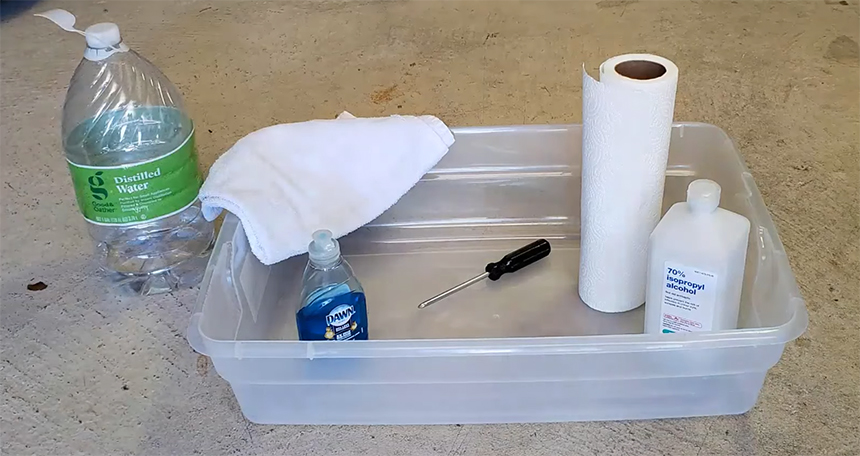
Not only will you need the telescope that you are cleaning, but you also need all of the necessary cleaning supplies. To clean your telescope’s mirror, you will need these materials:
While these tools and materials may seem weird as a list, we promise that these few tools are needed to clean your telescope mirror. If you want to get fancier with the process, there are several telescope mirror cleaning kits that you can purchase online or in a shop. It’s good to find kits that are high in quality and versatile for different telescope models. The Celestron Lens cleaning kit has been a great follower of the listed qualities. This guide to cleaning your telescope mirror works for all different telescope types. It doesn’t matter if you have some of the best telescopes of 2022 or if it is a cheap telescope like the Emarth telescope. You can use this guide to make sure you have clean and clear mirrors.
Cleaning your telescope mirror is much easier than you would think. No need to have any fancy tools or expensive cleaning products if that is something you don’t want to deal with. Now that you’ve seen the materials list, you know that this process has to be simple with the simple materials needed. You’ll want to clean your telescope when you notice that your view has become blurry. That is an indicator that the mirror has collected dust.
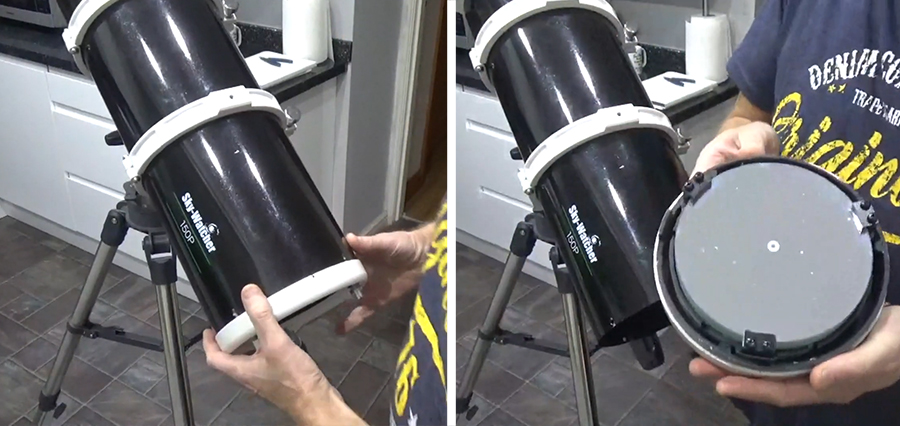
Each telescope looks a little bit different, but typically the screws on your telescope are around the tube of the telescope. They are near the primary mirror. Once you get your telescope unscrewed, you will have access to the mirrors inside.
When dealing with the mirrors in your telescope, which is made out of glass, you have to be careful. Telescopes are fragile pieces of equipment, and the things inside of the telescope are fragile as well. You have to make sure that you don’t drop the mirrors, scratch them, or crack an edge of a mirror. Doing any of those things will leave you with a telescope that no longer works properly. When you are doing any sort of maintenance to your telescope, you have to be careful.
Now that you have the telescope unscrewed, you will be able to see all the instruments inside. There should be cells that hold the mirrors. Grab the main mirror cell that is located near the end of the tube Trusted Source telescope - Reflecting telescopes | Britannica Reflectors are used not only to examine the visible region of the electromagnetic spectrum but also to explore both the shorter- and longer-wavelength regions adjacent to it (i.e., the ultraviolet and the infrared). The name of this type of instrument is derived from the fact that the primary mirror reflects the light back to a focus instead of refracting it. www.britannica.com . This is the cell holding the primary mirror. To undo the primary mirror, you have to undo the clasps that are on the cell. There will be several of these clasps that are around the edges. They are what hold the mirror in place. Once the clasps are undone, you can push the mirror out of the cell from the back. Make sure not to touch the glass of the mirror. The smallest touch can screw up its surface.
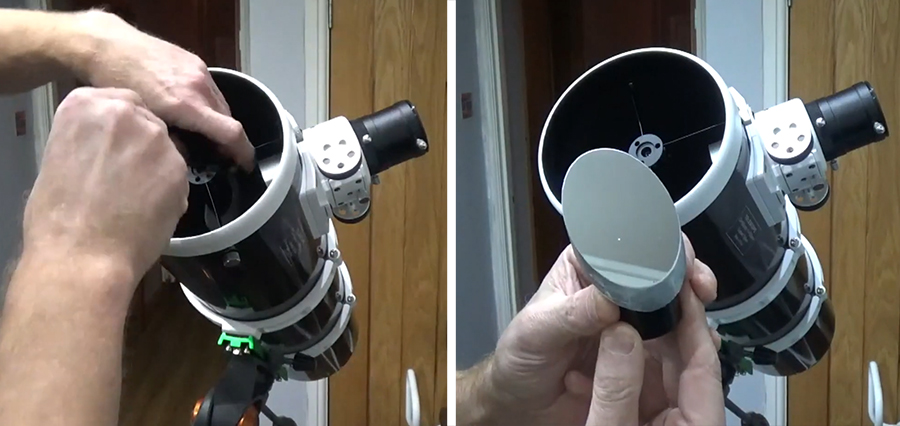
Reach in and remove that holder. Repeat the necessary cell removal steps for the second mirror. That way, you are now able to clean off both of the mirrors at once.
You don’t need any fancy cleaning solutions to clean off your mirrors. In fact, all you need is some water and soap. Take a small bucket and fill it up with warm water. Then, take unscented dish soap and pour a few drops into the bucket. You want the water soapy but not filling up with bubbles. The amount of water that you have depends on the size of your telescope’s mirrors. Smaller telescopes can have their mirrors cleaned in small buckets.
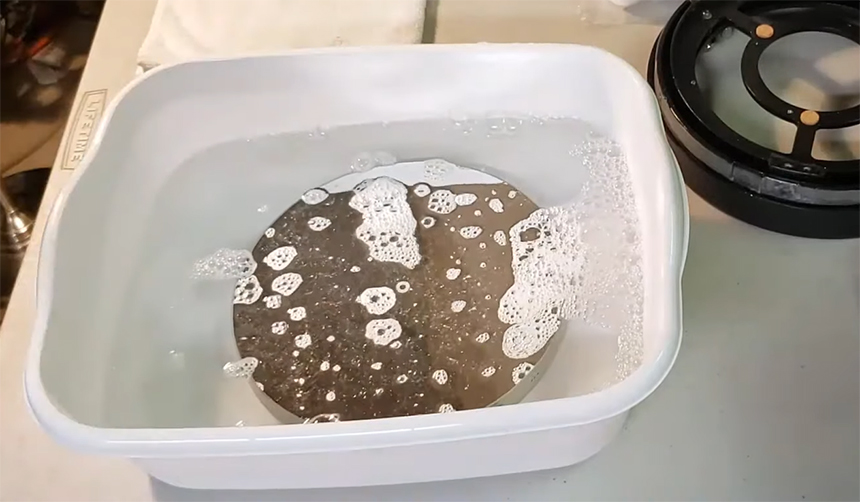
When cleaning your mirrors, DO NOT RUB THE SURFACE. This isn’t a dish that you have to scrub food off. You don’t want to do anything that will cause damage to the glass of the mirror. If there is still gunk on your telescope mirror that’s not coming off after dunking the mirror in the solution, take a non-grit cotton swab and gently push off the gunk. Be super gentle, so the stuff on the mirror doesn’t scratch it.
Once you have removed all the dirt and other pollutants from your telescope mirror, you have to rinse the soap off. Take distilled water (we don’t want any minerals getting stuck to the surface of the mirror) and pour it over the mirror. This can even be you pouring distilled water from a water bottle. It’s best to clean off one mirror at a time, so once you are done doing this process for the primary mirror, repeat the last few steps for the secondary mirror.
To dry the mirrors, place them on a drying rack or on a folded paper towel. Just make sure that wherever you put the mirrors will be safe during their drying time. It is best to let these mirrors air dry as you don’t want to be rubbing anything against the surface. When the mirrors are dry, place them back into their cell holders and put them back into the telescope. Don’t forget to replace the screws.
Cleaning the mirrors of your telescope is a much easier task than you might have expected. It is important to know how to clean your telescope mirrors, and it is even more important to make sure that your telescope is always at its best. Want to get a telescope but don’t know where to even begin researching? Check out some of the best telescopes of 2022. You don’t have to break the bank to get a telescope, and there are some available for less than $200. Whenever making repairs to your telescope, make sure to be careful at all times. Telescopes are great pieces of equipment, so you need to take good care of them.

